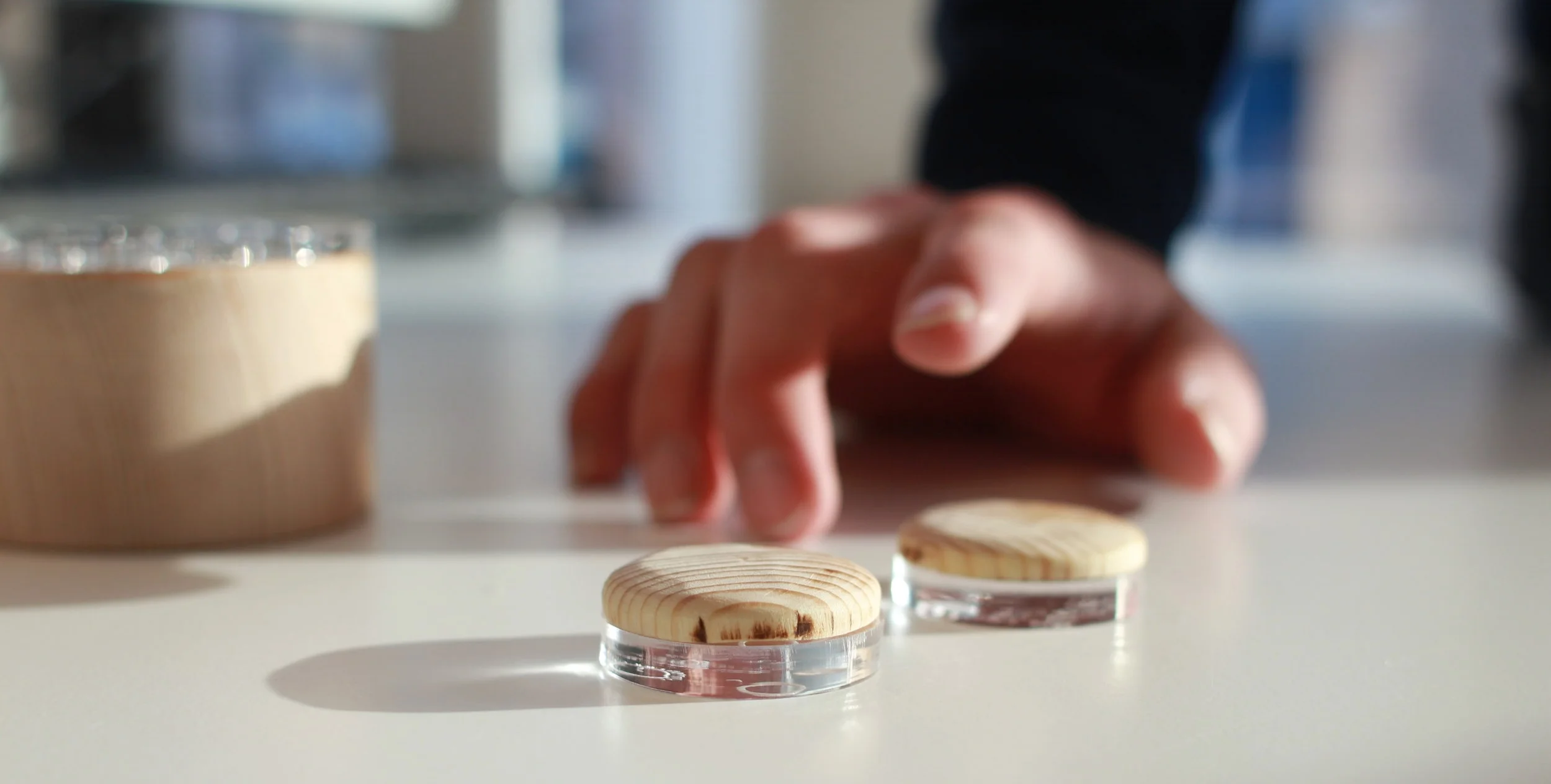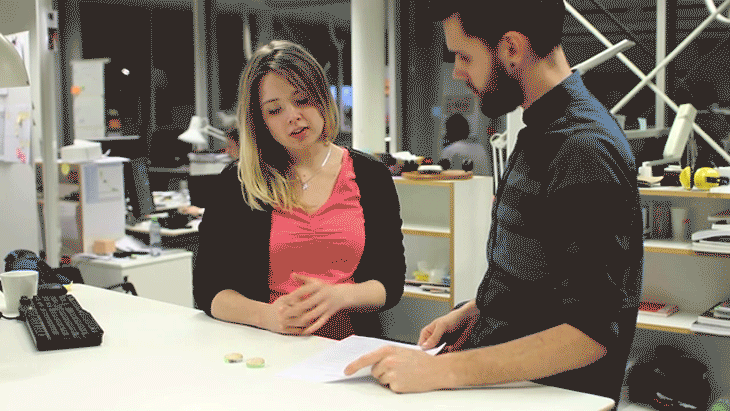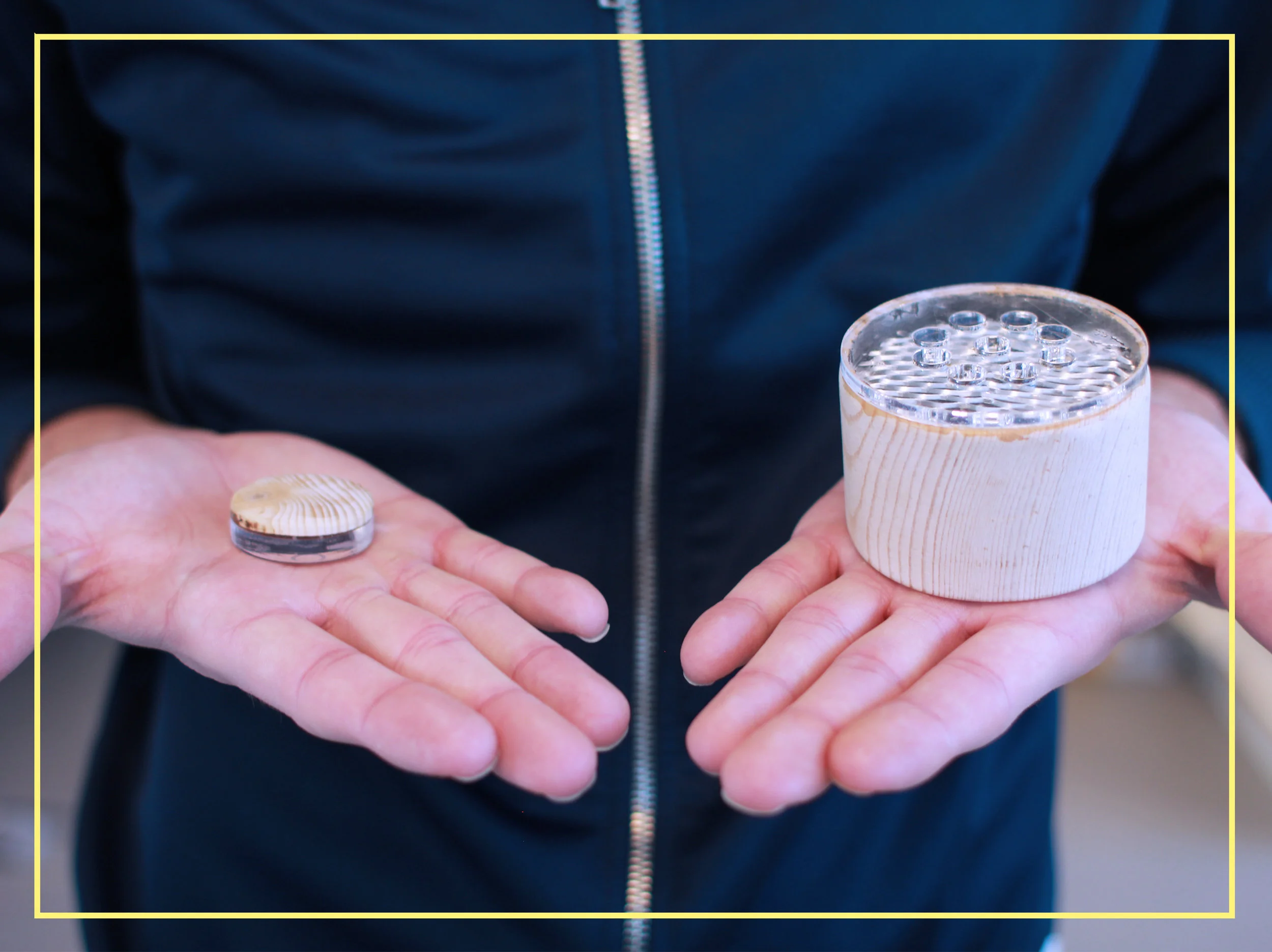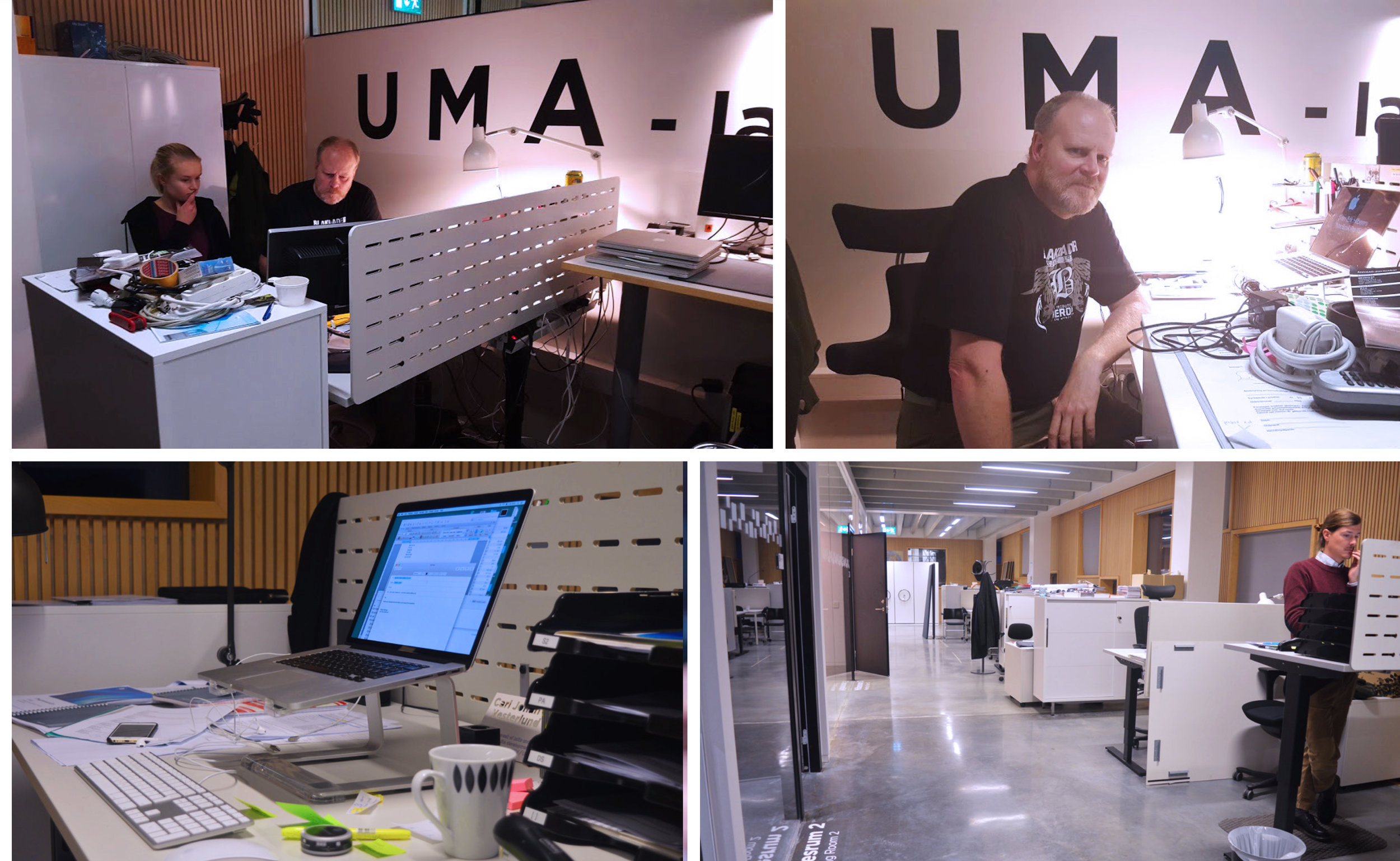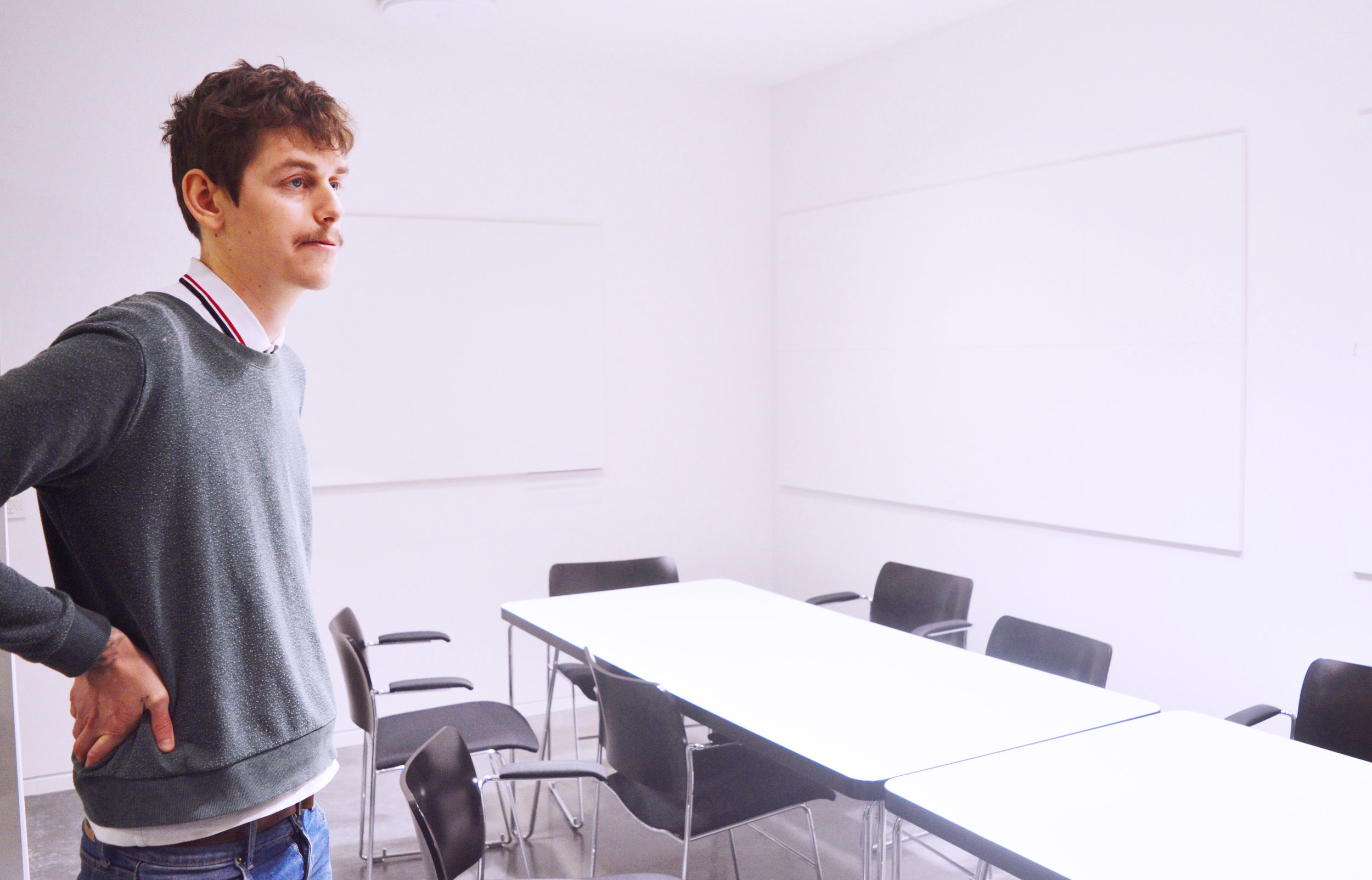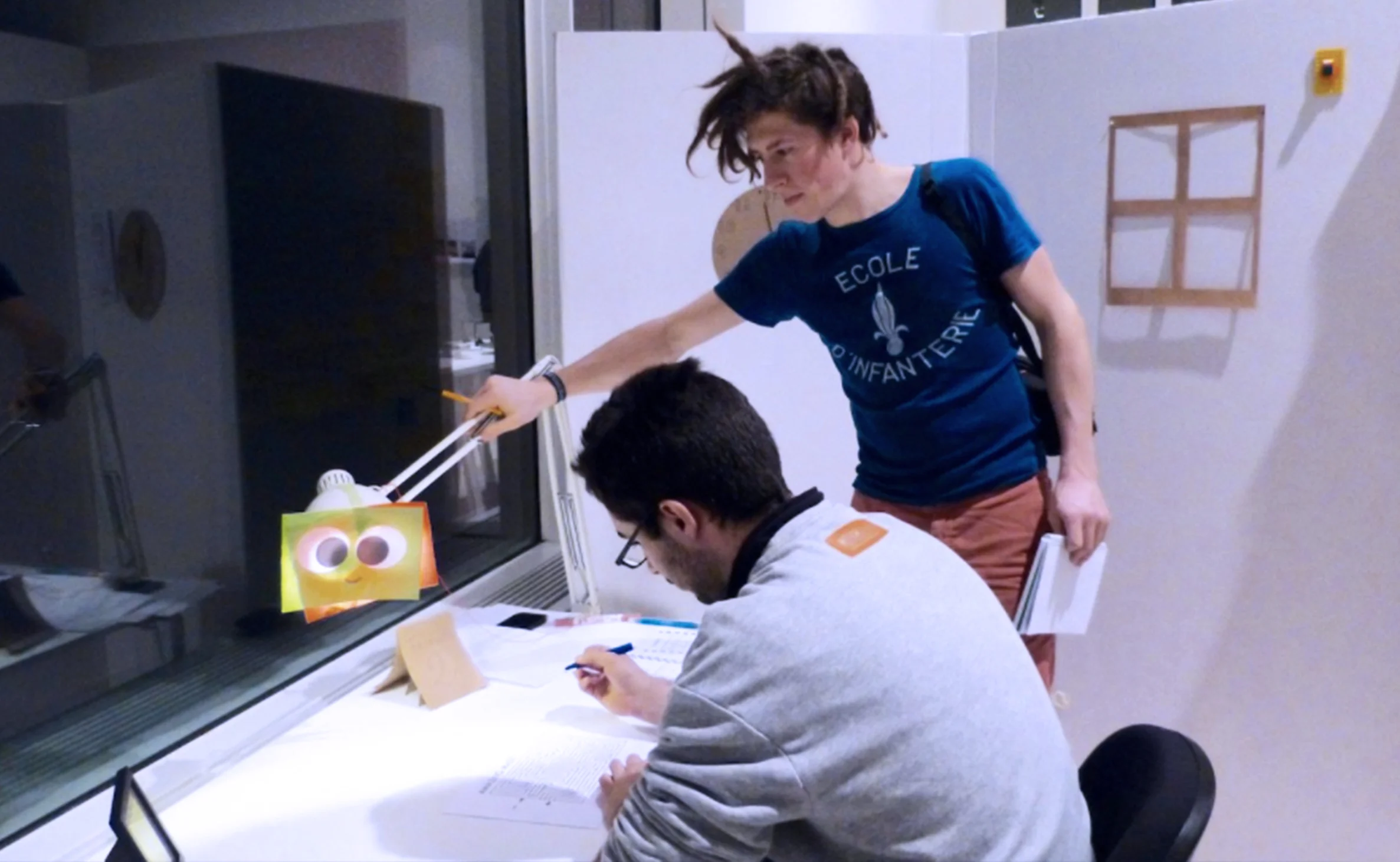IMMATERIAL DESIGN.
IOM gives a silent and simple solution to non-active offices.
This project was closely linked to Interactive Institute Sweden, and extensive Scandinavian research on how to solve the problems of sedentary office work. In general, people have stopped moving their bodies at work.
My team looked specifically at the problem and possibilities to invite the body and movement in to the office space. The solution manifests in an invisible and seamless interaction. A personal quiet zone activator removes noisy distractions. A raised-desk standing position of the worker and the possibility of having shared quiet meeting zones invites for social interaction. With time, new behaviour patterns between the worker and his co-workers will be established.
TEAM
James Zhou, Anton Almgren, Etienne Bouron (Interaction Design)
SKILLS / TOOLS
Behaviour analysis, co-creative workshop, graphical elements (UI), client presentations
PROJECT TIME
3 weeks during the the Industrial Design Intensive year
Concept Video
How it works
An interactive system connected to your standing desk
1. PERSONAL DESKTOP BUTTON
A personal button makes the surrounding noise level customisable. Fine tune levels of noise or music inside your own silent hotspot.
2. HOTSPOT NOISE REDUCTOR
A speaker projects a noise reducing hotspot linked to your desk. It only activates when raising the standing desk, to incentivise the proved healthy benefits of standing while working. It only works within a certain range around your desk.
3. SHARE THE SPACE BY CONNECTING BUTTONS
Connect your personal silent space with a colleague to create a shared meeting space. IOM enables quiet meeting spaces, in the middle of the office.
Process
Targeting sitting time, rather than physical activity, is the most effective way to reduce prolonged sitting, according to the first comprehensive review of strategies designed to reduce sitting time.
-THE JOURNAL OF HEALTH PSYCHOLOGY REVIEW
The greatest problem for me is the disturbance, there is never a private moment.
-STAFF MEMBER, UMEÅ SCHOOL OF ARCHITECTURE
IDEATION
Our desktop research gave us results. Research from the public health domain showed a huge concern for a low- activity level in the society. This is especially apparent in office work environments where we barely move our bodies at all. Physical activity is certainly not naturally integrated in our every day environment.
Together with these insights, the most important findings from our user insights was the high level of distraction that disturbed daily work-flow. We posed the question:
How could we motivate people to move in their office environment without disturbing their work flow?
IMMERSION
The picture is showing Anton testing out noise-reducing headphones. We tried to be as bodily aware as possible regarding the problems that office workers meet in their daily work. We mapped out our own weekly moving patterns of time spent walking, standing, exercising etc. We discovered a huge difference in our own moving patterns.
TEAM IDEATION
While ideating, many initial wild ideas came about, such as objects transforming in your office. We wanted to test these ideas with people.
WORKSHOP
We held a co-creative and public workshop at Bildmuseet museum. People got to test out our lo-fi prototypes, such as a moving and interactive lamp, negative brainstorming cards (what would make you sit down more at work?) and also a noise sound prototype as distraction with speakers to observe peoples reaction.
WORKSHOP SURVEYS
We put out surveys to understand peoples behaviour in the office. James is showing our "sliders" where people could grade and give their opinions.
USABILITY TEST
Etienne assists in a lamp concept that becomes sad when you sit for too long. Noise surrounds the office from speakers.
KEY FINDING:
"People do not like to be told what to do, but office noise is naturally distracting and can be used as incentive to move. Our chosen concept therefore became a quiet zone that activates with your standing desk.
PROTOTYPING
We decided to make lo-fi video prototypes to test with users. We received feedback that having a quiet zone is a positive incentive for using your standing desk. Users reported that having a quiet space, while being away of all the things in the office as an added bonus.
Lo-fi scenario sketching by me and Anton
